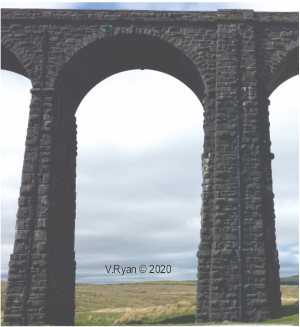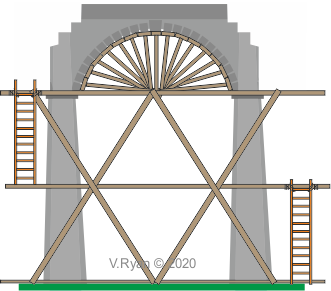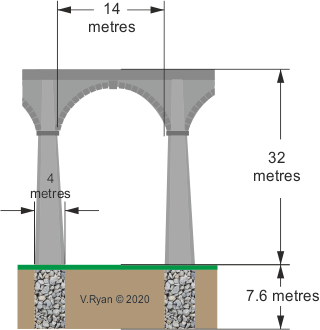V.Ryan © 2017
The Ribblehead Viaduct, is one of the best examples of a stone Victorian structure. It was completed in 1874, although it was another two of years (1876), before the Settle to Carlisle railway, ran passenger trains across it. It crosses the valley of the River Ribble, located in North Yorkshire. The viaduct was essential, for the increase in passenger and freight traffic, between England and Scotland, during the late nineteen century.
The route taken by the railway line, meant that a viaduct was the most efficient and economic way, to span the valley floor. The viaduct was designed by John Crossley. It took five years and a workforce of over two thousand, to complete the task. One hundred lives were lost during its construction, as a result of the hazardous construction methods and small pox.



The viaduct is composed of twenty four arches, with tapered piers, which distribute the compressive forces, all the way down to the foundations. Four of the piers, equally distributed along the viaducts length, are reinforced (as seen in the photograph opposite. The arches are constructed from layers of brick, faced with stone. The decorative keystone of each arch, can be seen clearly.
The viaduct is an example of both functional design and good aesthetics.

The method of construction can be seen in the photograph below. The foundations were first established and piers built upwards. A triangulated wood frame was used as ‘scaffolding’. The arches were then built, with a frame holding each one in place, until completed.


MORE BASIC FACTS
The piers are 4 metres wide at the base.
Each arch has a span of 14 metres.
The overall height of the viaduct is 32 metres.
The foundations extend a further 7.6 metres below the surface.
Every sixth pier is reinforced, strengthening the structure.
The viaduct extends for four hundred metres, crossing the valley.
